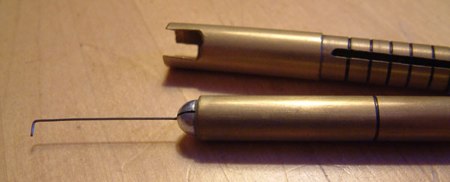
Despite, Hack a Day seeming to be fairly lock heavy lately, we’ve yet to cover a major story from The Last HOPE. At the conference, [Jon King] talked about vulnerabilities in Medeco locks and presented his Medecoder tool. Medeco is really what makes this story interesting; unlike the EU, the US has very few high security lock manufacturers. You pretty much have to use Medeco and it’s found in many government agencies.
The Medeco locks have a vertical row of six pins arranged like most pin tumbler locks. Unlike your average lock, the rotation of the pins is important. When the key is placed in the lock, it not only moves the pins to the correct height, it also rotates them to the correct orientation. A sidebar blocks the cylinder unless the pins are rotated properly. Each pin has three possible orientations. They’re biaxial as well, which means the pin’s offset point allows for three more possible positions.










